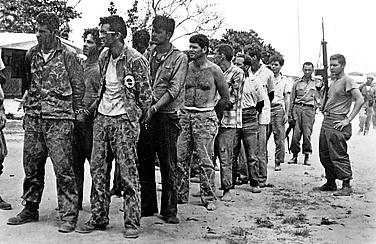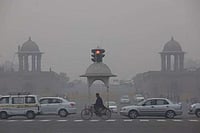Heartstopper, adapted from Alice Oseman's popular young-adult graphic novels, resonated not only with its intended teenage audience but also with older viewers, particularly LGBTQ+ adults. The wholesome romance between the two teenage boys, Nick and Charlie, captured the hearts of many, but it also had a bittersweet edge to it.
In its second season, Heartstopper faced high expectations. The initial season explored the "will-they-won't-they" tension between Nick, the popular rugby player, and Charlie, the older student who faced bullying after revealing his sexuality. The show's gentleness and the strong support from Charlie's friends culminated in a fairytale ending for their crush.
However, the challenge arises when the series progresses beyond the uncertainty of their relationship. Nick and Charlie are now an adorable and affectionate couple, spending their time in love-struck bliss. But teenage life brings its pressures, and their overwhelming feelings sometimes cause strain.
As they face their exams, Nick grapples with coming out to various family members, including a domineering older brother and a distant father. The series presents relatable awkward scenarios, like a dinner party, but avoids overdramatizing them. Heartstopper maintains a generally mild peril, preferring to resolve conflicts swiftly and offering a hopeful idealism that resonates with queer teenagers.
Nick's journey of coming out as bisexual brings depth to the storytelling, exploring biphobia. His disclosure also affects the dynamics of their relationship, touching on the impact of coming out on both partners. Moreover, the show evolves by delving into the lives of peripheral characters. Elle and Tao contemplate taking their friendship to a new level, raising concerns about potential risks. Isaac's storyline emphasizes the importance of books and self-discovery, while Tara and Darcy's relationship faces revelations about its unknown aspects. Even the previous season's antagonist, Ben, experiences character development.
Heartstopper exhibits a quiet plea for understanding and maturity, extending its emotional depth to teachers who have lives beyond the school gates. The series embraces familiar teenage milestones, like school trips and prom, and explores issues related to same-sex couples, such as sleepovers and room-sharing on trips, all the while maintaining a subtlety that adds to its charm.
In its return, Heartstopper becomes richer and more assured, widening its scope to engage a younger audience while retaining its sweetness. The show's portrayal of queer adolescence strikes a chord with viewers, making it a thoughtful and lovely experience. Overall, "Heartstopper" is celebrated for its heartfelt storytelling and representation of queer teenagers and their experiences, making it a compelling and relatable series for viewers of all ages.






















.png?w=200&auto=format%2Ccompress&fit=max)



